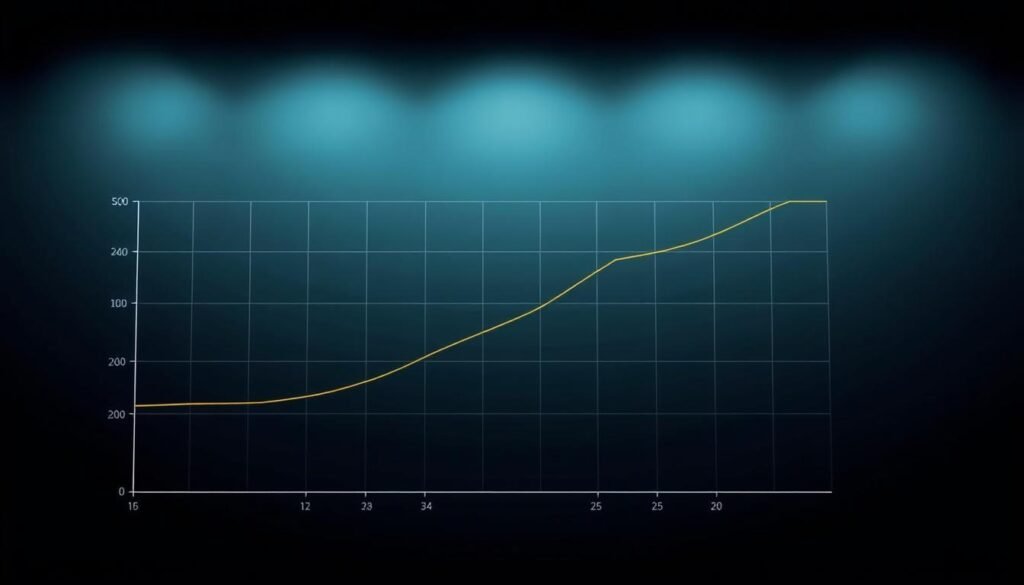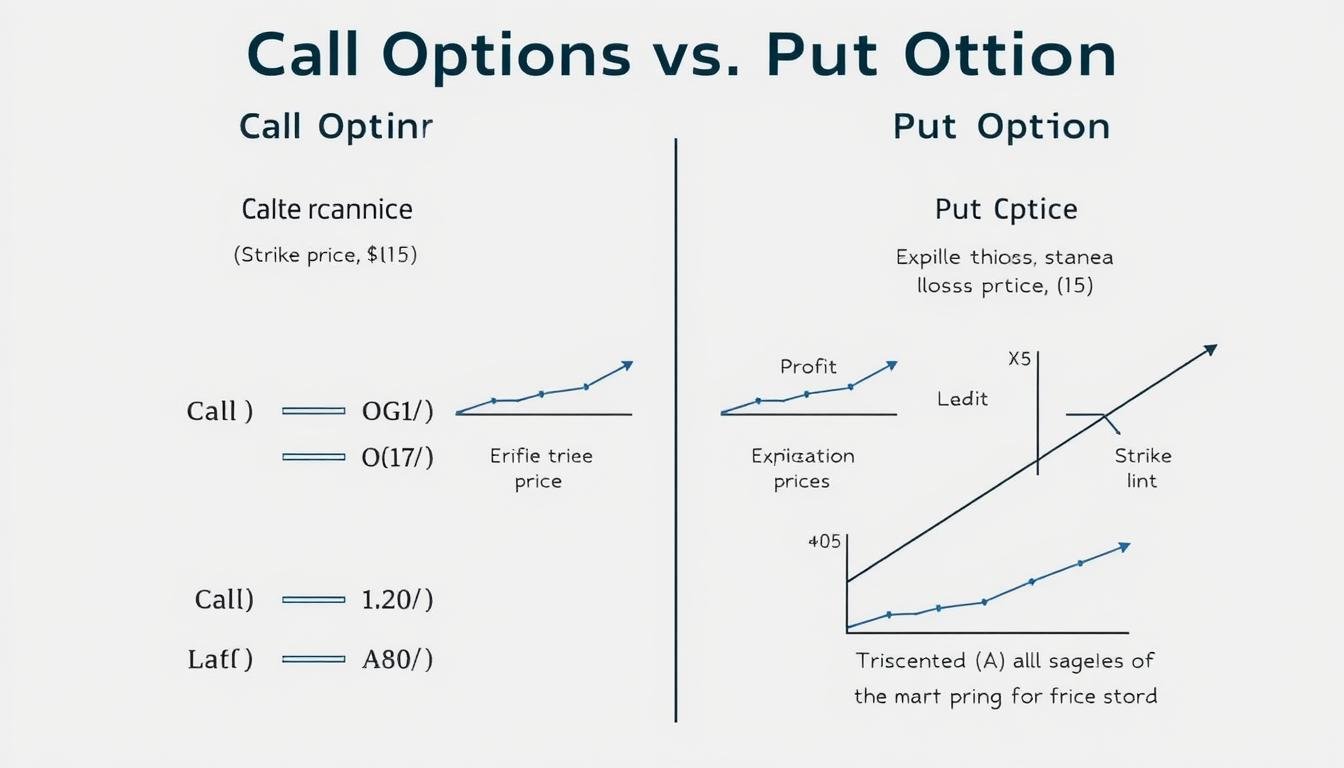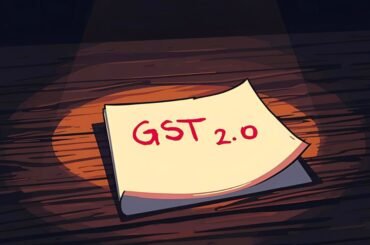Have I ever chosen the wrong side of a trade because I misunderstood direction or timing?
I keep this question front and center as I compare two contract types that shape my trading and investment moves. One grants the right to buy a stock at a set strike and date; the other grants the right to sell under similar terms.
Understanding price, premium, and breakeven helps me avoid surprises. Each standard contract usually controls 100 shares, so a small move in the stock can mean big profit or big loss.
In my view from India, the choice depends on market direction, how much time I need, and how much risk I accept. Selling contracts can bring income but carries assignment risk. Buying them limits my loss to the premium but can expire worthless if the stock never reaches breakeven.
This article will walk me through practical examples, simple rules for strike and expiration, and clear ways to weigh owning the stock against using these instruments.
Understanding the basics: what I mean by call and put options
To trade smart, I first pin down what each contract actually lets me do with a stock. A call option is my right to buy the underlying asset at a set strike price by the expiration date. A put option is my right to sell the same stock at the agreed strike within the same timeframe.
Each standard option contract typically controls 100 shares, so a quoted price translates to a 100x cash flow effect when I calculate premium or exercise value. The premium I pay is the upfront cost and the most I can lose as a buyer.
- The strike price anchors value: a higher stock price makes a call more valuable; a lower stock price makes a put more valuable.
- I can exercise before expiry or sell the option to close the position; I am not obliged to buy or sell the stock.
- As a buyer I hold the right; the seller takes the obligation and faces assignment risk if the contract ends in the money.
| Feature | What it means | Quick example |
|---|---|---|
| Contract size | Controls 100 shares | Price quote ₹5 → ₹500 outlay |
| Premium | Max loss for buyer | Paid upfront |
| Expiration | Time limit to be right | Longer date = higher premium |
How call options and put options work in practice
I walk through how these contracts actually play out when the stock moves.
Call option: right to buy the underlying asset at a strike price before the expiration date
I pay a premium to buy the right to acquire the underlying asset at a set strike price. If the stock price rises above strike plus the premium, the position becomes profitable. I can exercise the option or sell the option contract before the expiration date.
Put option: right to sell the underlying asset at a strike price before the expiration date
I pay a premium to hold the right to sell the stock at the strike price. The option gains value as the stock price falls below strike minus the premium. If the move never happens by the date, my loss is the premium paid.
Option contract essentials
Standard equity contracts usually represent 100 shares, so quoted premiums scale by that factor. Liquidity, spreads, and time value shape the market price each day.
| Feature | What I watch | Practical note |
|---|---|---|
| Premium paid | Cost to buyer / income to seller | Defines max loss for buyer |
| Strike price | Anchor for value | Determines intrinsic value |
| Contract size | Typically 100 shares | Multiply quoted price by 100 |
| Exercise rights | Buy/sell before expiration | American-style allows early exercise |
Payoff, breakeven, and intrinsic value: the mechanics that drive profit and loss
I start with breakeven and intrinsic value to judge whether a premium is worth paying.
Breakeven math is simple. For a bullish contract I add the premium to the strike price. For a bearish contract I subtract the premium from the strike price. Those levels tell me when the trade moves from loss to profit.

Intrinsic vs time value
Intrinsic value is the immediate exercise value: how much the contract is in the money given the current stock price. Time value is what I pay for the chance the stock will move before expiration.
How ITM and OTM affect outcomes
If the stock trades above the strike, the bullish instrument has intrinsic value. If the stock trades below the strike, the bearish instrument has intrinsic value.
Even a correct directional view can lose money if the move is too small or comes after expiration. Contracts are wasting assets; time decay and rising implied volatility change prices and the breakeven challenge.
| Mechanic | What I watch | Practical action |
|---|---|---|
| Breakeven | Strike price ± premium | Set profit target and stop around this level |
| Intrinsic vs time value | Current stock price vs strike | Decide hold, sell, or exercise before expiration |
| Expire worthless risk | No intrinsic value at expiration | Limit premium per trade, size positions to portfolio risk |
| Implied volatility | Prices rise with expected moves | Prefer buying when implied volatility is reasonable |
Call options vs put options: when I choose one over the other
Before placing money, I judge whether the expected move can clear the cost and the deadline.
I use a bullish contract when I expect the stock to rally above the strike plus the premium inside my chosen expiry. The appeal is leveraged upside with defined risk: my maximum loss equals the premium I paid.
Using calls when I’m bullish and want leveraged upside with defined risk
Buying this type of contract costs less than shares, so I can control more stock for less capital. I match expiry to the catalyst—earnings, policy news, or a technical breakout—to reduce the chance of expiring worthless.
Using puts when I’m bearish or hedging downside on shares I own
I buy a protective contract to insure my holdings. It gains value as the stock price falls, and it can replace risky short positions when borrow costs or limits make shorting unattractive.
Considering time to expiration and expected move to avoid expiring worthless
Time is a currency. If the move needs more time than the contract allows, I either pay more premium for longer expiry or lower my strike ambition.
| Decision factor | When I choose it | Practical note |
|---|---|---|
| Directional bullish | Expect price rally above strike + premium | Leverage with known max loss (premium) |
| Hedge / bearish | Protect stock or seek downside exposure | Prefer instead of shorting when borrow is costly |
| Time alignment | Catalyst within expiry window | Match expiry to event to limit decay risk |
| Strike selection | ITM for cheaper time decay, OTM for lower cost | Align strike with probability and target price |
The seller’s angle: selling calls and selling puts explained
When I sell a contract I collect premium up front, but I also accept an obligation that can be costly if the stock price moves sharply before the expiration date.
I receive premium immediately and that reduces my breakeven on the trade. Assignment risk means I may need to deliver or buy shares at the strike price any time before expiry.
How I manage income and obligation
- Covered sale: I back a short call with shares I own. This limits my upside to the strike plus the premium, but it protects me from unlimited loss on a naked short.
- Selling a put: I accept the duty to buy stock at the strike price if assigned. I do this only when I want to own the stock at that effective entry.
- Time decay helps sellers, but a fast move in price can wipe out the money earned from premium.
| Seller action | What I get | Key risk |
|---|---|---|
| Sell contract | Premium received | Assignment before expiration |
| Covered call | Income + limited upside | Give up further profit if stock rallies |
| Sell put | Premium or forced share purchase | Buy at strike if assigned |
I track realized and unrealized profit and loss, and I factor in commissions, taxes, and fees because they change how much money I keep. I never rely on a contract to expire worthless; I use stop-losses, buybacks, or rolls to control loss and overall risk.
Beginner-friendly strategies I use: covered calls and protective puts
My beginner approach focuses on pairing stock ownership with strategies that either add yield or cap downside. Both tools let me shape risk while I keep shares and stay engaged in the market.
Covered call: generating income on shares I hold, with capped upside
I sell a call option against 100 shares I own to collect premium. For example, owning stock at $79.34 and selling the 82.5 strike for 2.37 nets $237 per contract.
If the stock price stays below the strike through the expiration date, I likely keep the premium and the shares. If it closes above, my upside is capped and the shares may be called away.
Protective put: capping downside risk on stock I own for a period of time
I buy a put option as insurance. Buying the 77.5 strike for 2.76 limits downside to roughly $4.60 below my $79.34 purchase, excluding fees and slippage.
This protection costs the premium paid and covers a defined window. I weigh cost versus peace of mind and manage both strategies by rolling strikes or expiry when needed.
| Strategy | Typical use | Key trade data |
|---|---|---|
| Covered call | Neutral to mildly bullish | Sell 82.5 strike, collect 2.37 |
| Protective put | Hedge holdings | Buy 77.5 strike, pay 2.76 |
| Management | Active | Roll, close, or accept assignment |
Market scenarios in the present: aligning strategy with stock price trends and volatility
I pick a plan based on whether the market shows steady strength, choppy range, or fast drops. In steady uptrends I favour buying call options or selling covered calls when near-term upside looks limited.
During corrections or event risk I shift to buying put options or buying protective puts to shield core holdings. Long positions can lose the entire premium if the expected price move does not happen before expiration.
- I match expiration to the expected move so I do not overpay for distant time that dilutes returns.
- I choose strikes using support and resistance, not wishful thinking about target price.
- I favour liquid underlying asset names to keep spreads tight and reduce slippage on entry or exit.
| Market regime | Strategy | Key risk / note |
|---|---|---|
| Uptrend | Buy calls or sell covered calls | Cap upside when selling; control risk when buying |
| Correction | Buy puts or protective puts | Protection costs premium; time matters |
| High volatility | Prefer selling premium on liquid stocks | Watch assignment risk and position size |
Worked examples with strike price, premium, and expiration
I lay out a bullish and a bearish trade using actual stocks and clear math. Each example shows breakeven, possible profit, and the worst loss I can face by the expiration date.
Bullish example: buying a call option on Apple
I model the trade with Apple at a 150 stock price. I buy a 170 strike price for a premium paid of 15 per share. That is ₹1,500 for one contract that controls 100 shares.
Breakeven is 170 + 15 = 185 by the expiration date. If the stock trades to 195, the intrinsic value is 25, so my net profit is 10 per share or ₹1,000 per contract. My maximum loss is the ₹1,500 premium paid if price finishes at or below 170.
Bearish example: buying a put option on Netflix
With Netflix at 500, I buy a 450 strike for a premium of 10 per share, ₹1,000 per contract. Breakeven is 450 – 10 = 440 by expiry.
If the stock falls to 400, the put’s intrinsic value is 50, netting 40 per share or ₹4,000 on one contract. If the move never happens, the option can expire worthless and my loss is the premium paid.
- I can roll or sell before expiry if price approaches breakeven to lock in money and avoid time decay.
- Choosing an in‑the‑money strike raises cost but increases the chance of value at expiration.
- I size each contract so the premium is an amount I can afford to lose if the example does not play out.
| Example | Breakeven | Max profit at target | Max loss |
|---|---|---|---|
| Apple 170 strike | 185 | ₹1,000 at 195 | ₹1,500 premium |
| Netflix 450 strike | 440 | ₹4,000 at 400 | ₹1,000 premium |
Risk, time decay, and what I do to manage losses
I treat every contract as a wasting asset. If the stock fails to move enough, fast enough, the option can option expire worthless by the expiration date I chose.
Long positions can lose the full premium. Short positions may be assigned any time and can produce large losses if the market gaps. Compared to buying stock, I must be right on direction, magnitude, and time to make money.

Common mistakes to avoid: misjudging direction, magnitude, and timing
I limit position size so one bad trade does not wipe out significant money. I avoid buying far out-of-the-money contracts with little time before expiration.
I follow simple rules: set predefined exits, use alerts, and roll when implied volatility or time forces a rethink. If I plan to sell put option or right sell a covered contract, I only do so when I accept owning the shares at that strike.
- I use buy put hedges tactically around earnings or macro events to reduce drawdowns.
- I factor commissions, taxes, and slippage into breakeven and sizing decisions.
- I prefer spreads to bound risk instead of naked long or short exposure when event risk is high.
| Primary risk | What can happen | My action |
|---|---|---|
| Option expire | Lose full premium if stock misses price move | Match expiration to the expected move; keep size small |
| Assignment on short | Forced to buy or deliver shares at strike | Only sell if willing to own or deliver; use covered structures |
| Time decay & IV | Value erodes as date nears; prices change with volatility | Roll, close early, or choose strikes with better time alignment |
| Costs | Commissions, taxes, and slippage reduce net money | Include costs in break‑even and size trades conservatively |
Conclusion
I finish with a practical rule: define direction, set a realistic strike and expiration, and accept the premium paid as the cost of clarity. Each option is a contract on an underlying asset that typically controls 100 shares, so price moves can change profit and loss quickly.
Calls give the right to buy and puts give the right to sell by the date. Buyers limit loss to the premium; sellers earn premium but face assignment and larger obligation. Covered structures and protective contracts each have clear tradeoffs for income or hedge.
My checklist is simple: direction, magnitude, and time. If those three align, I size the trade, track time decay, and plan exits so my money and risk stay under control in the stock market.




